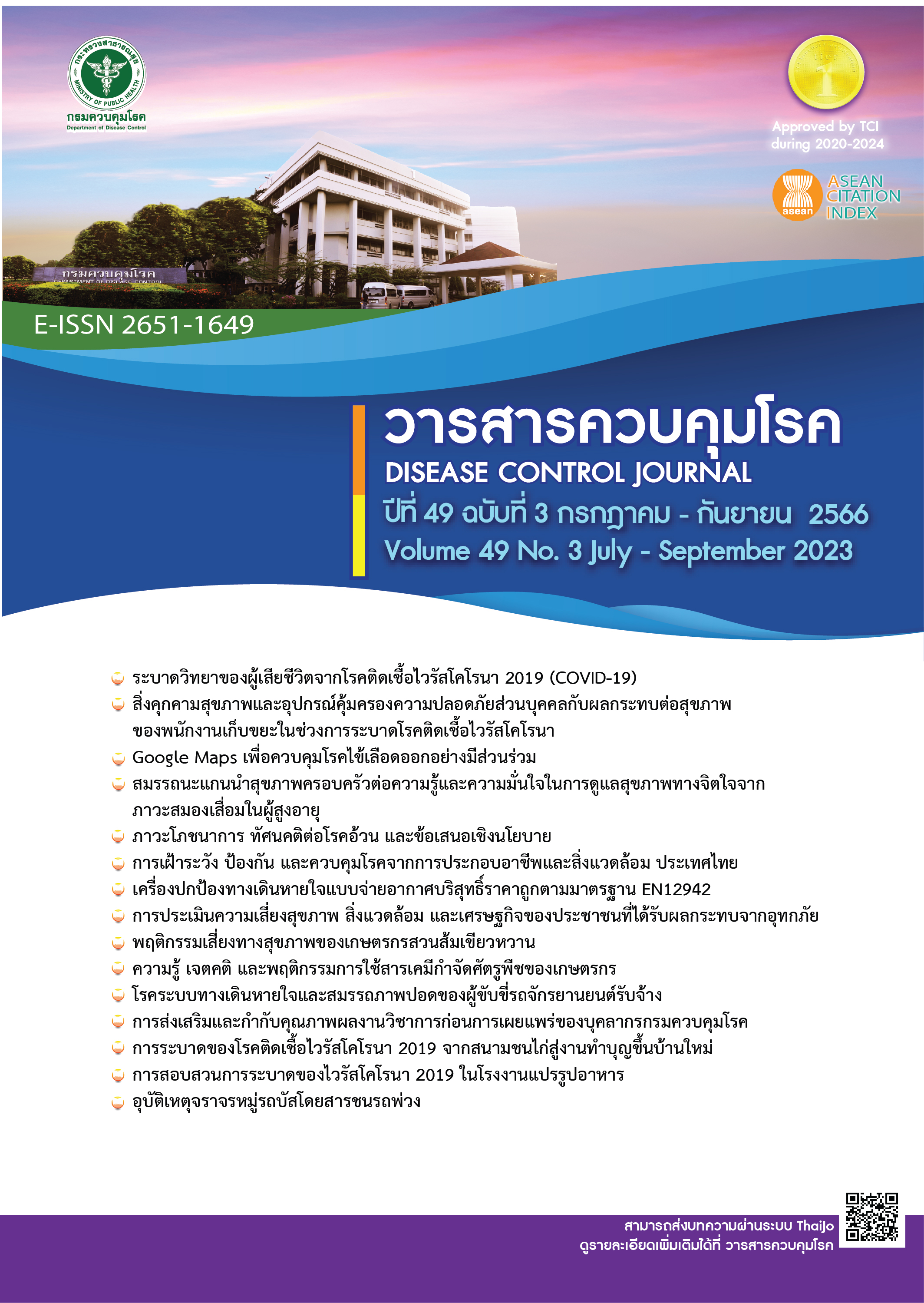Development of clearance approval process for Department of Disease Control’s academic products
DOI:
https://doi.org/10.14456/dcj.2023.52Keywords:
DDC clearance, model development, academic products monitoringAbstract
Implemented by Department of Disease Control (CDC), DDC clearance is one of the policies that is primarily intended to support and monitor quality of academic products before dissemination. A small number of DDC researchers engaged in policy practice. The explanation of this problem is still unknown.
To address this gap, we conducted this research to understand the reason why most DDC researchers have not participated in DDC clearance and to develop a more practical process of DDC clearance. This research was designed based on action research methodology. It contained 4 steps which were: (1) identify problems,
(2) develop process (model), (3) try out the model, and (4) evaluate the model by subject matter experts. A combination of quantitative and qualitative approaches was used in the data analysis. The result indicated that all stakeholders have not fully understood the DDC clearance process. A possible explanation for the problems may be the lack of communications. DDC clearance is not compulsory and has unclear procedures; therefore, most researchers tend to disregard the process. This study developed the DDC clearance process based on publication ethics consisting of (1) authorship, (2) plagiarism, (3) conflict of interest, (4) privacy and confidentiality, (5) redundant publication, and (6) salami publication, as well as reducing the time
required for consideration procedure. This developed DDC clearance was tested on 52 people. Moreover, the developed procedure and assessment form were approved by subject matter experts in the final step.
Communication strategy might be used to increase the number of researchers who comply with DDC clearance. The developed DDC clearance from this study should be implemented and further evaluated in order to improve DDC clearance in an effective manner.
Downloads
References
Division of Innovation and Research (DIR).
Annual Report [Internet]. [cited 2022 Jul 28]. Available from: https://ddc.moph.go.th/uploads/ckeditor2/dir/files/รายงานประจำปี%202564%20Final%20รอลงเว็บ.pdf. (in Thai)
Leerapan P. Health related action research: Concept and methodology. Action Research Workshop; 2018 Nov 9; Department of Disease
Control, Nonthaburi: 2018. (in Thai)
Blank MB, Jemmott JB. The CDC clearance process: an obstacle to progress in public health. Am J Public Health. 2015;105(4):614-5.
Centers for Disease Control and Prevention, Office of the Associate Director for Science. Guidance for scientific review and clearance [Internet]. 2011 [cited 2021 Jul 5]. Available from: https://www.tephinet.org/sites/default/files/content/resource/files/scirevguide_0.pdf.
Joanne C, Harold J. The CDC clearance process: Supporting quality science. Am J Public Health. 2015105(6):e1-2. doi: 10.2105AJPH.2015. 302691
Office of Management Assessment National
Institutes of Health. 1184 - Preparation and clearance of scientific, technical, and public
information presented by NIH Employees or Produced for Distribution by NIH [Internet]. [cited 2020 Jul 13]. Available from: https://policymanual.nih.gov/1184#A2648C1F
U.S. Environmental Protection Agency. Best practices for clearance of scientific products at EPA [Internet]. [cited 2021 Jul 5]. Available from: https://www.epa.gov/sites/default/files/ 2018-05/documents/best_practices_for_clearance_of_scientific_products_at_epa_final_21may2018.pdf
National Science and Technology Development Agency (NSTDA). Guidelines of research publication. Pathum Thani: National Science and Technology Development Agency; 2019. (in Thai)
National Research Council of Thailand (NRCT). Manual of research publication. Bangkok: National Research Council of Thailand; 2015. (in Thai)
Health System Research Institute (HSRI).
Satisfaction assessment of using academic publication on HSRI knowledge bank website fiscal year 2018: Monitoring and Evaluation Committee for Improving Satisfaction of Using Academic Publication Fiscal Year 2019 [Internet]. [cited 2022 Jul 27]. Available from: https://www.hsri.or.th/sites/default/files/o16.pdf (in Thai)
Downloads
Published
How to Cite
Issue
Section
License
Copyright (c) 2023 Disease Control Journal

This work is licensed under a Creative Commons Attribution-NonCommercial-NoDerivatives 4.0 International License.
Articles published in the Disease Control Journal are considered as academic work, research or analysis of the personal opinion of the authors, not the opinion of the Thailand Department of Disease Control or editorial team. The authors must be responsible for their articles.


.png)



